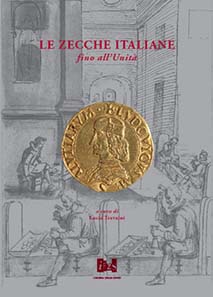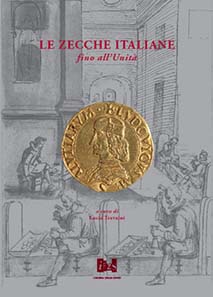July 14, 2011 – Le Zecche Italiane fino all’Unità edited by Lucia Travaini puts together the documentation related to all Italian mints active from the fifth century AD to the Unification of Italy in 1861. For the first time all this material is collected in one work, offering a comparative and historical view of the activity of such mints.
Lucia Travaini (ed.), Le zecche italiane fino all’Unità, Libreria dello Stato – Istituto Poligrafico e Zecca dello Stato SpA, Roma 2011. 2 volumes, boxed, 1600 pages, 197 figures, colour and b/w, including maps and graphs. ISBN 978-88-240-1333-8. Euro 250,00.
It is an impressing quantity of material coming from very different sources and provenances, often from publications difficult to trace and even in languages not easily accessible (such as Russian for the mints on the Black Sea).
This book will be a unique tool for a better classification of all Italian coins: previous catalogues such as the Corpus Nummorum Italicorum are updated in this book with full explanations and discussion of new attributions and chronologies. There are no similar works for other countries in Europe.
The first part of the book consists of introductory essays dealing with the historiography of Italian mints, mint technology and organization, medieval and modern minting right, mining and mint relations, metrology and monetary weights; there are also general overview on early medieval, Byzantine and Carolingian mints.
Mints’ entries are organized alphabetically in four sections: mints in today’s Italy; mints abroad active for some Italian State authority, such as Avignon, Caffa, Chios; mints active during a siege; forgers’ or non official mints. Each mint entry consists of: a historical profile; list of all coins struck (no illustration is given but problem-coins are discussed with full bibliography); list of main collections where coins are kept; description of mint building and location; list of mint personnel, mint equipment, archival sources and full bibliography (from Muratori 1739 to 2008/2009).
Many entries are also dedicated to mints which never really existed but which had been ‘created’ for local pride or wrong attributions of coins or documents.
Over sixty authors contributed to writing essays and mint entries: Italian and international university lecturers, museum curators, archivists, independent scholars. The editor of the book is Associate Professor at the Università Statale di Milano, Dipartimento di Scienze dell’Antichità (since 1998); she is co-author with Philip Grierson of Medieval European Coinage volume 14 (South Italy, Sicily and Sardinia), and author of many books and articles.
The full summary of the book and list of names of all authors can be downloaded from the homepage of Lucia Travaini.





